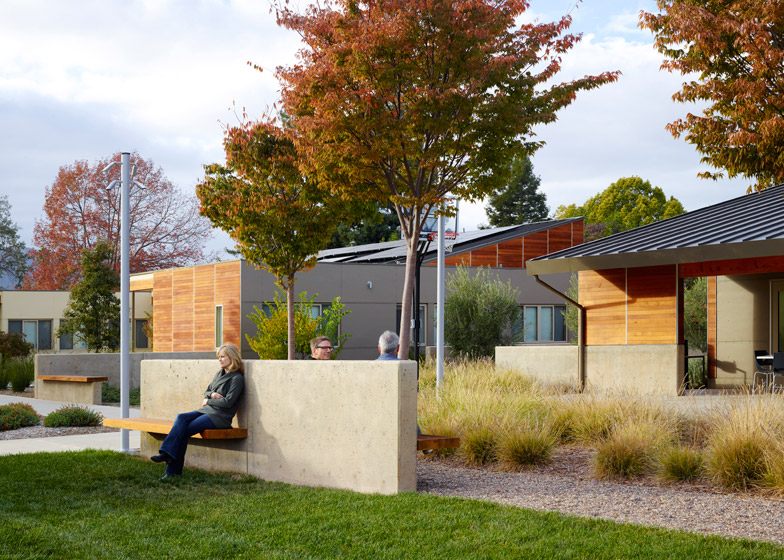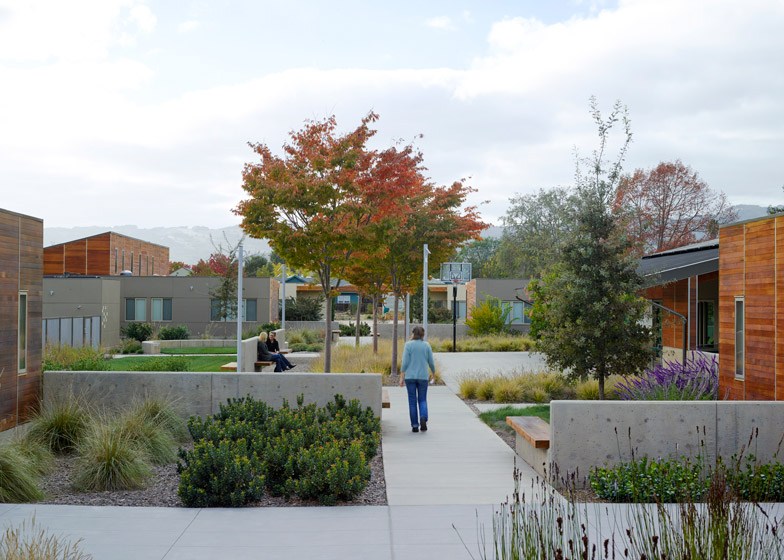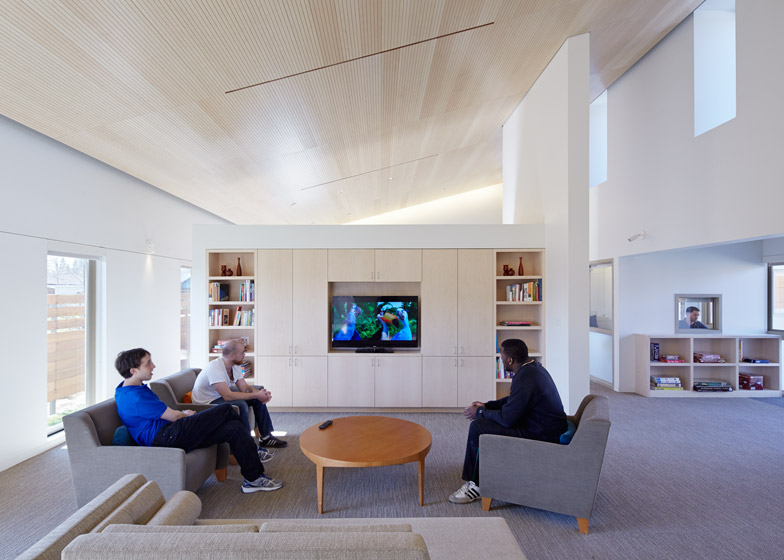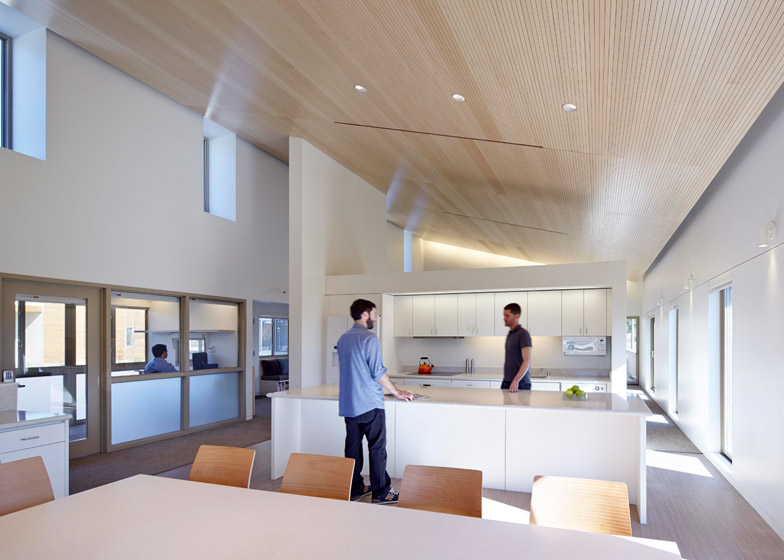The buildings of this California housing community were designed by Leddy Maytum Stacy Architects to suit the domestic and social needs of adults with autism – the fastest growing developmental disability in the US (+ slideshow).
Autism spectrum disorder affects an estimated one in every 88 people in the US. Recognising this, a group of California families banded together in 2009 to establish the Sweetwater Spectrum Community, a collective of 16 adults with autism.
San Francisco-based Leddy Maytum Stacy Architects was tasked with designing a permanent residential development for the community.
The complex includes four houses – each housing four individuals – a community centre, a fitness facility and pool, a teaching kitchen, and an urban orchard and garden.
The aim was to provide a new national model for supportive housing for adults with autism, offering "life with purpose and dignity".
"As parents get older, the question invariably becomes, 'what will happen to my child?'," said Marsha Maytum, a principal with Leddy Maytum Stacy.
"We wanted to design a place of calm and clarity with a strong connection to nature. Those are universal attributes anyone can relate to."
Based on an emerging body of research on designing for autism from the University of Arizona, spaces are carefully arranged to create a series of non-threatening thresholds, allowing residents to interact at whatever level they find most comfortable.
Elements of the design are arranged in pairs and purposely segregated from larger groups. All of the houses, for example, have a pair of bedrooms on each side separated by shared living spaces. The houses themselves are also paired, with two sets flanking the community centre on opposite ends of the site.
Site lines are planned to allow direct views into spaces, so residents can get a sense of a room before they cross into it.
Photograph by Marion BrennerAll four houses are nearly identical, so that community members will feel a sense of familiarity from residence to residence and will be more comfortable visiting each other.
To foster a serene atmosphere, colours are muted and most of the lighting, including daylight, is indirect. The simple flat and pitch-roofed structures are designed with deliberate restraint. Porches and overhangs create additional thresholds and further moderate the bright California sunlight.
Externally, buildings are clad with a mixture of timber panels and grey-toned cement boards, while internal surfaces include blond-wood ceilings and a mixture of carpeted and hard floors.
Low-energy heating and cooling is integrated into the floor slabs, providing even temperatures. and offering the added benefit of being silent.
Photovoltaic panels and solar hot water heaters further lessen the community's environmental footprint, covering nearly 80 per cent of its energy needs.
A low-lying, drought-tolerant landscape unites the campus. Here, landscape architect Roche+Roche also took the needs of the residents into account – creating a network of rock gardens and seating areas.
A progression of garden areas leads from public, to semi-private, to private spaces. Custom benches allow people to sit back to back, allowing conversation without eye contact.
Photography is by Tim Griffith, apart from where otherwise indicated.
Project credits:
Architect: Leddy Maytum Stacy Architects
Structural engineer: Structural Design Group
Landscape: Roche + Roche
Mechanical/electrical/plumbing engineer: Timmons Design Engineers
Lighting designer: Architectural Lighting Design
Acoustics: Charles M Salter Associates
Civil engineer: Adobe Associates
General contractor: Midstate Construction
Solar photovoltaic provider: California Clean Energy
Solar photovoltaic installer: Solarcraft Services
Geotechnical engineer: Miller Pacific Engineering Group
Furniture: One Workplace








